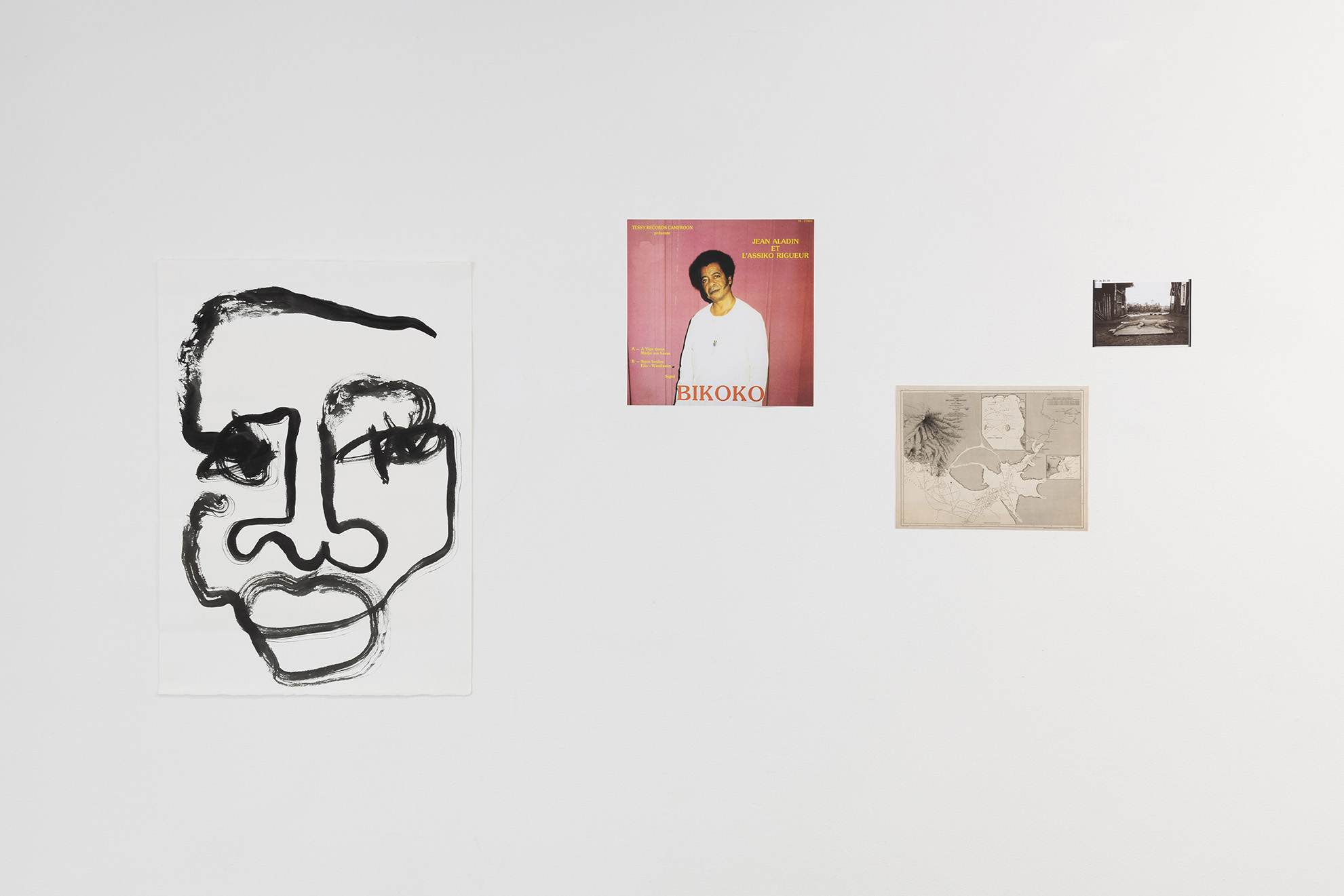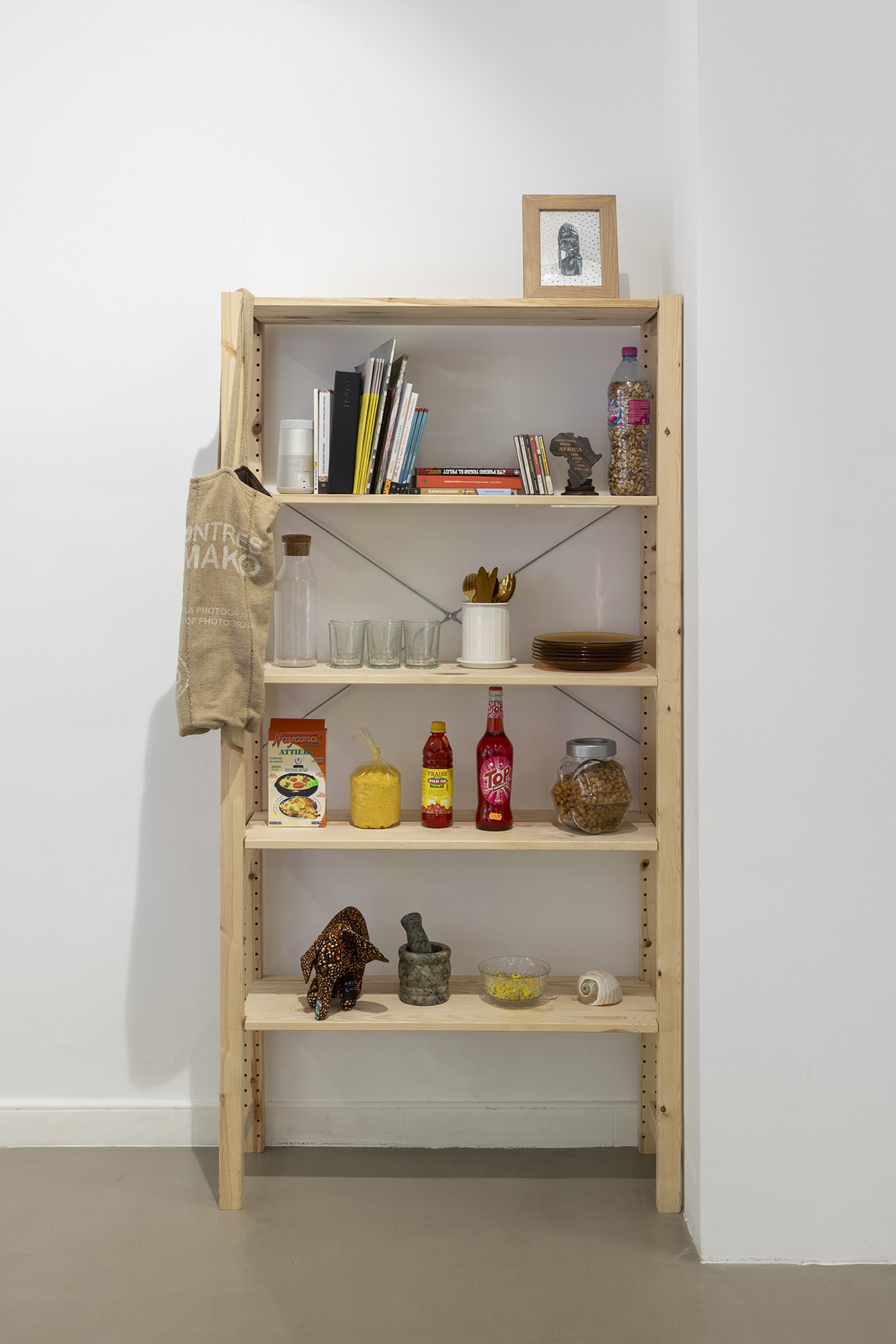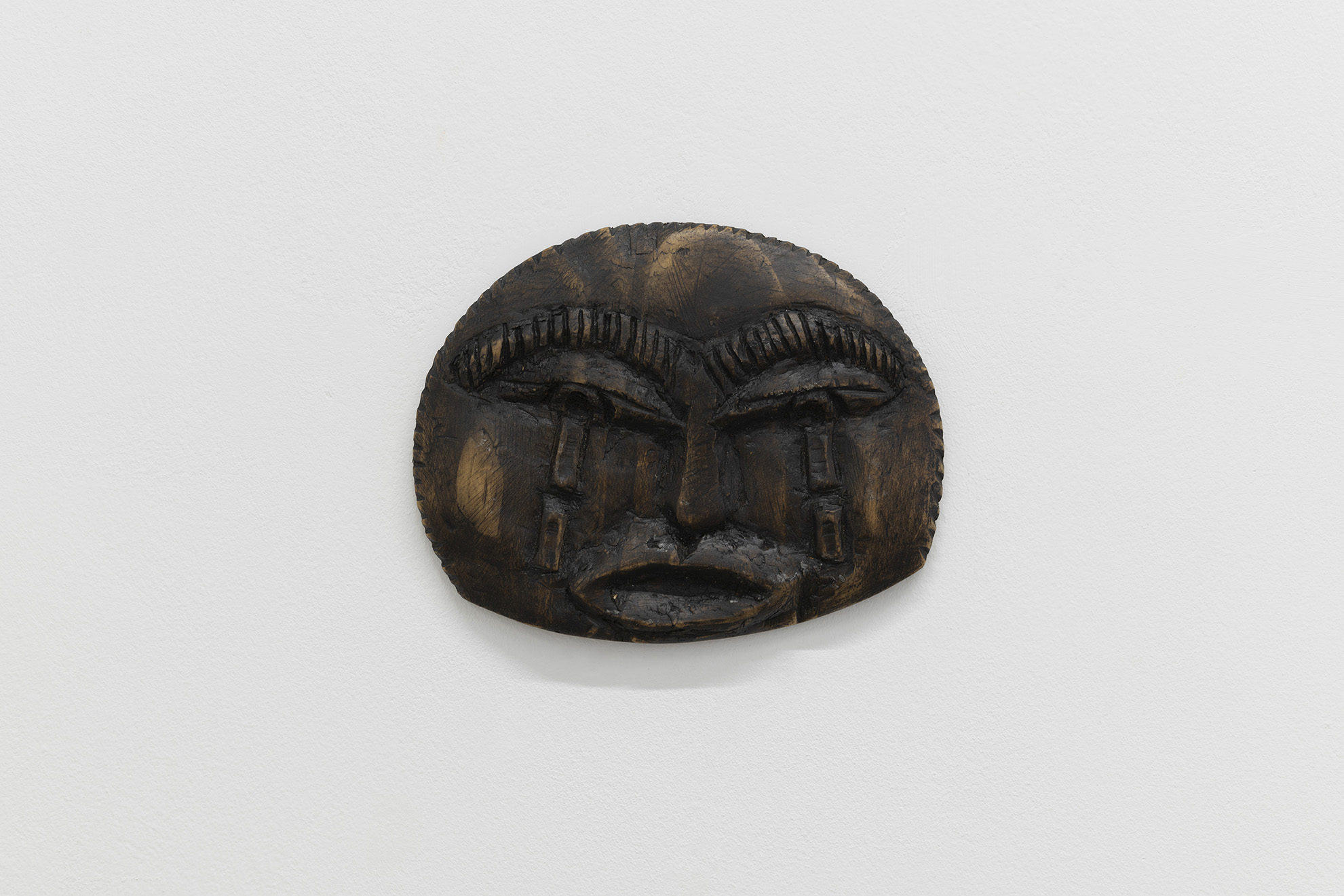29 June – 02 September 2023
Barcelona
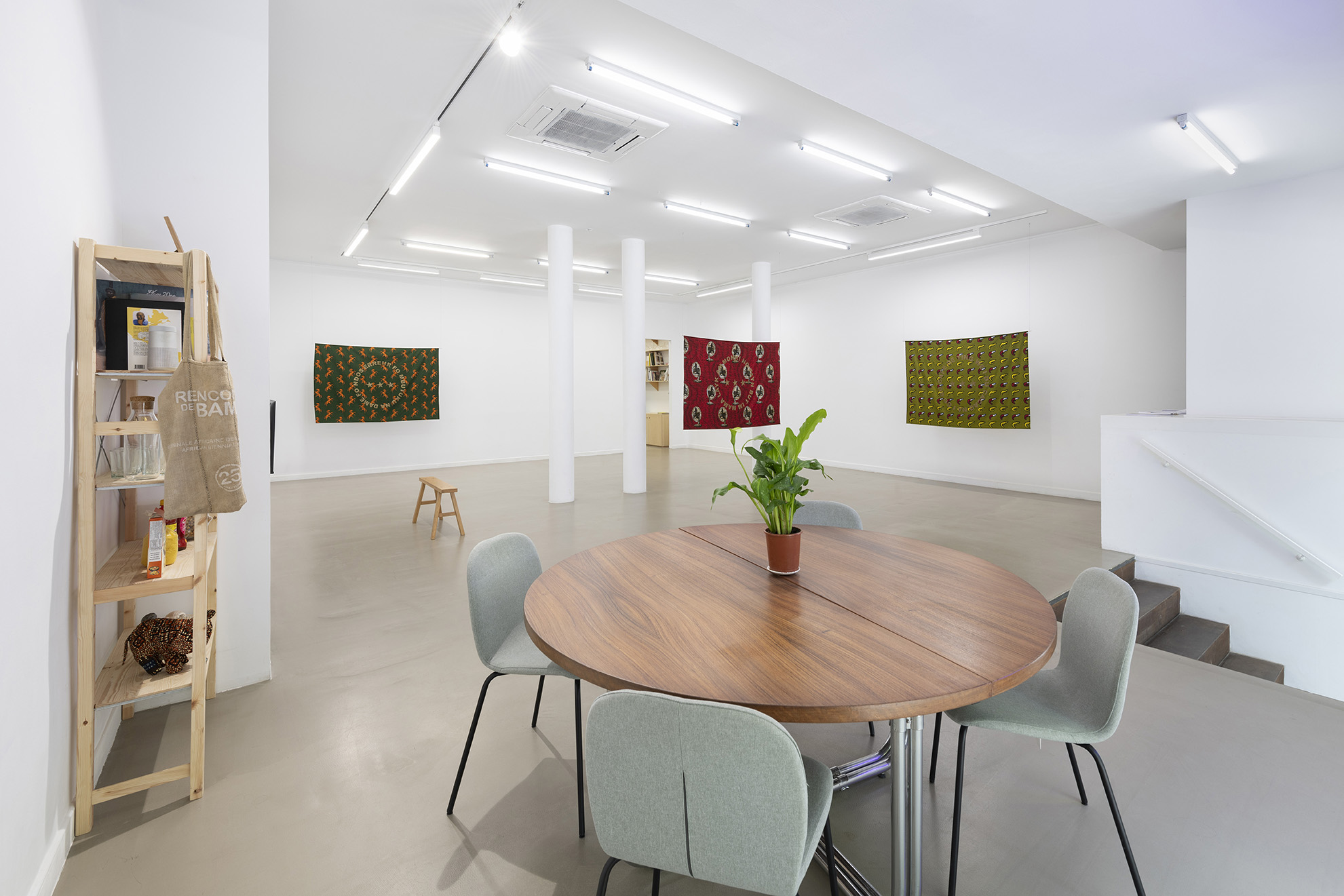

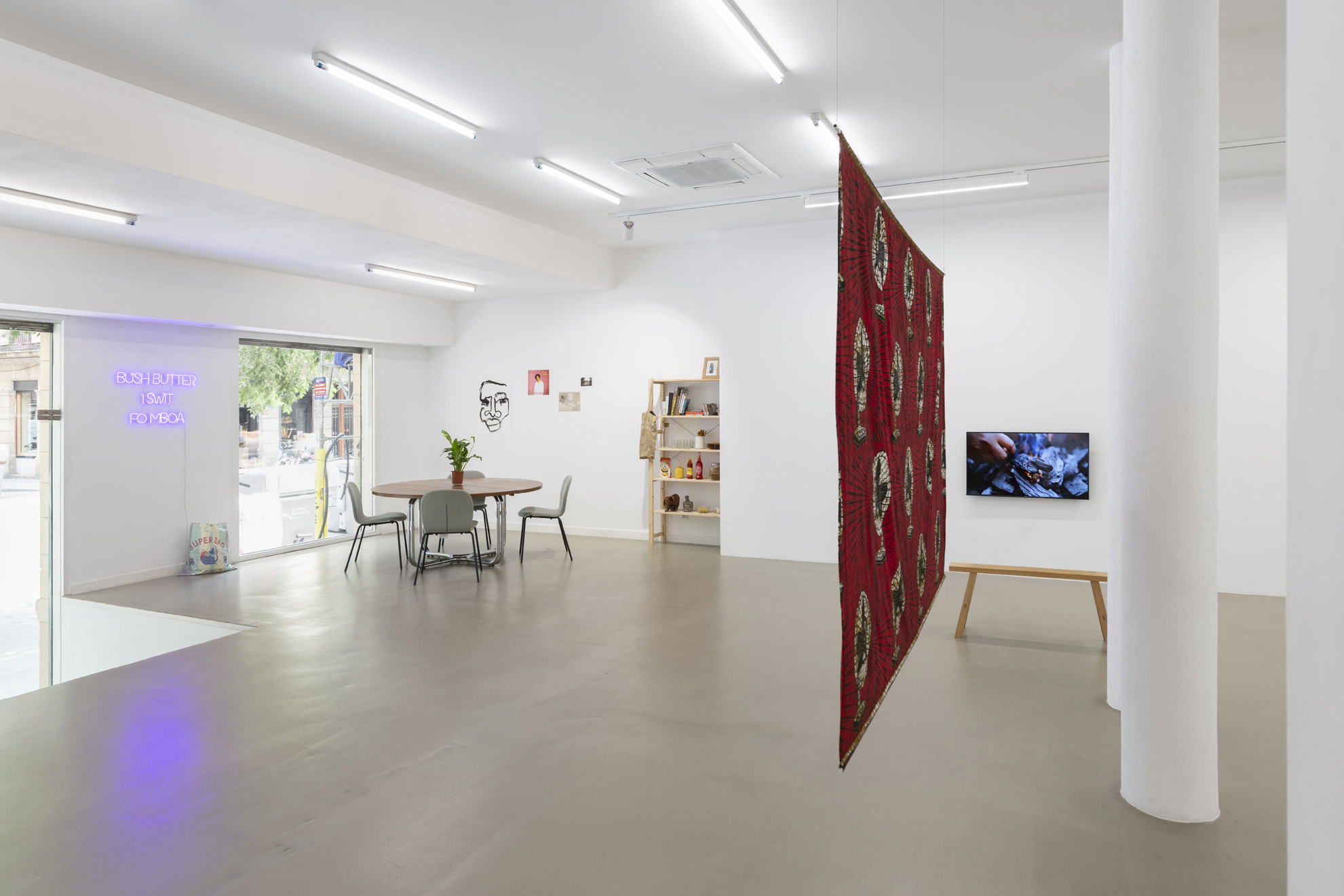
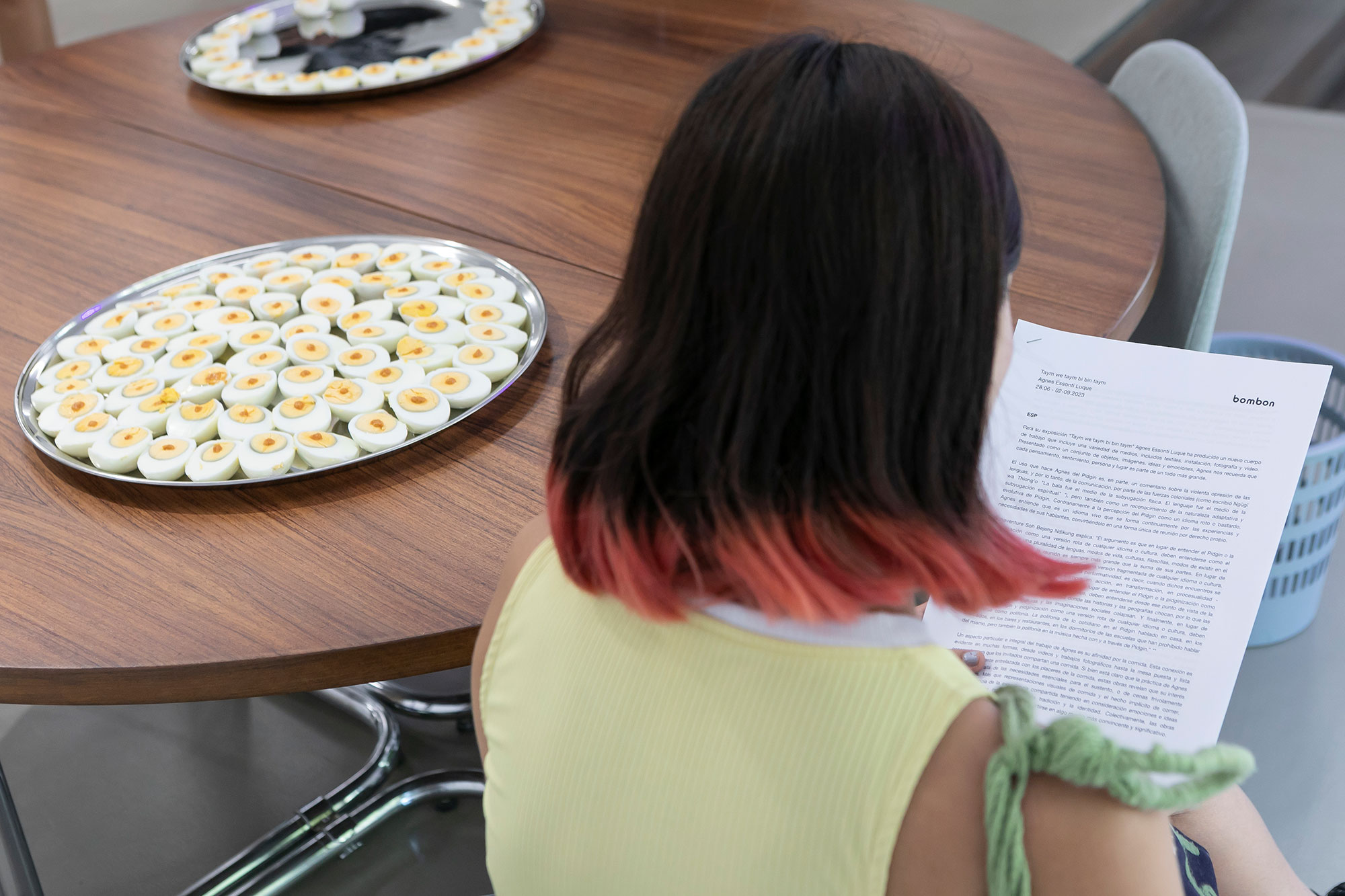

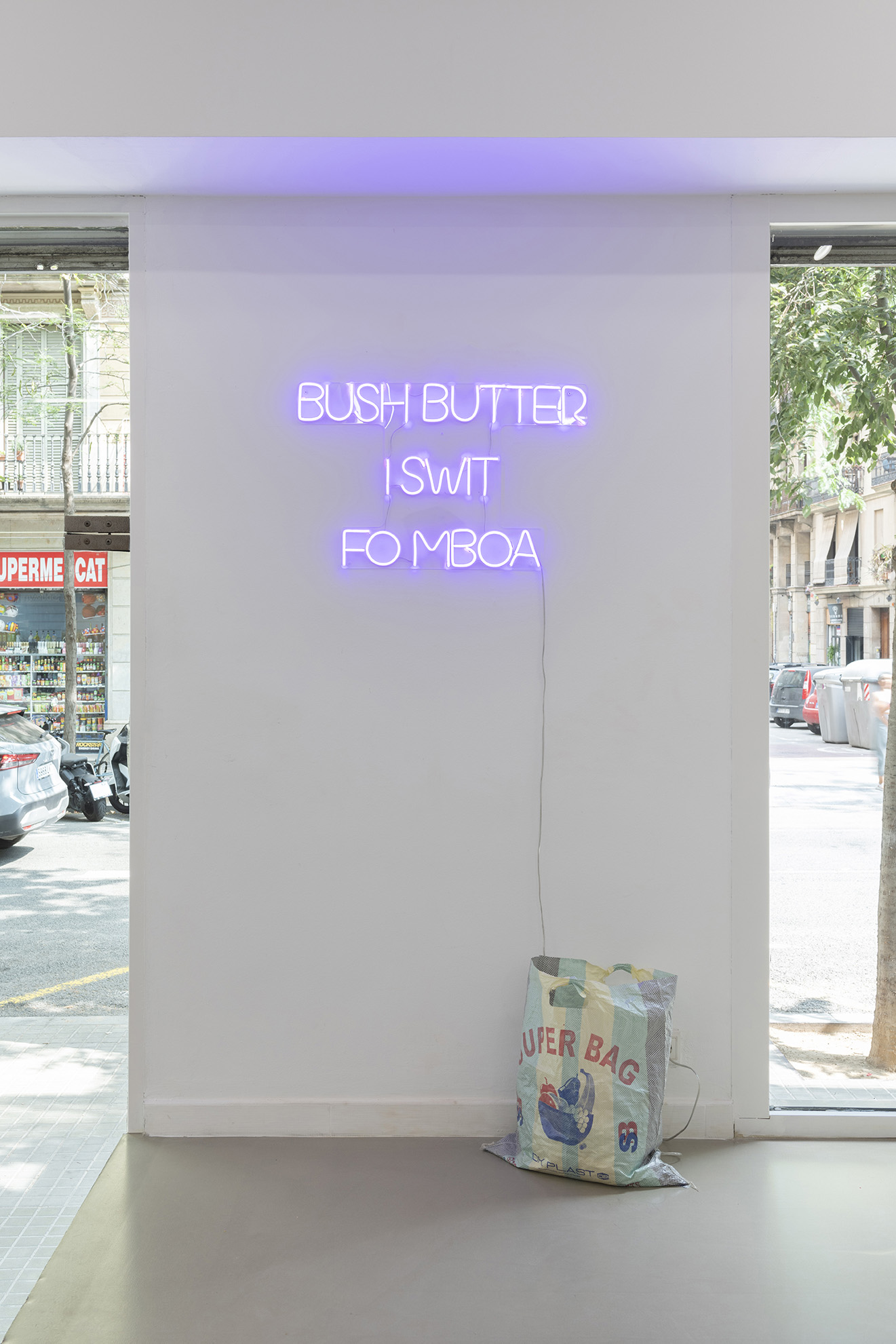
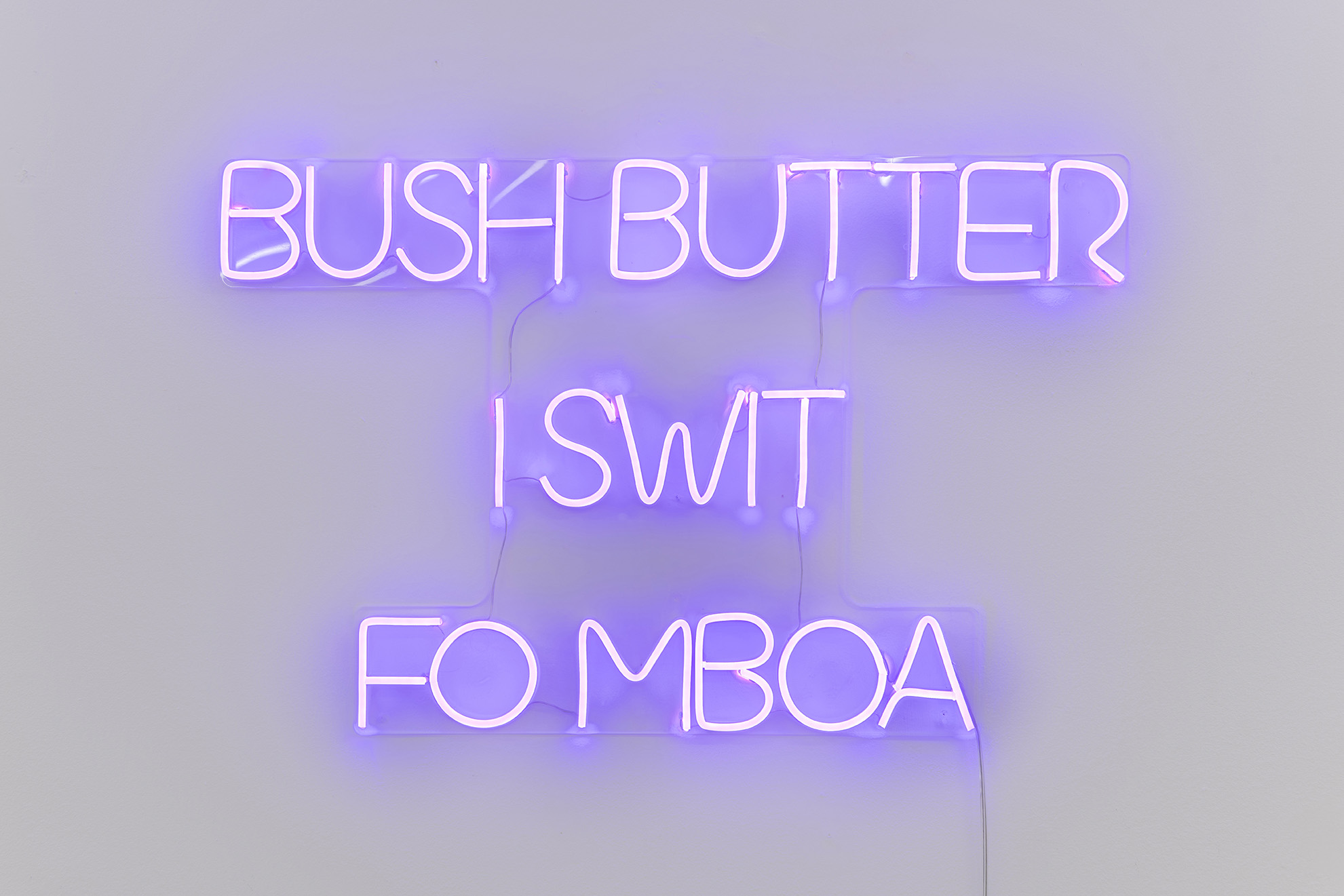
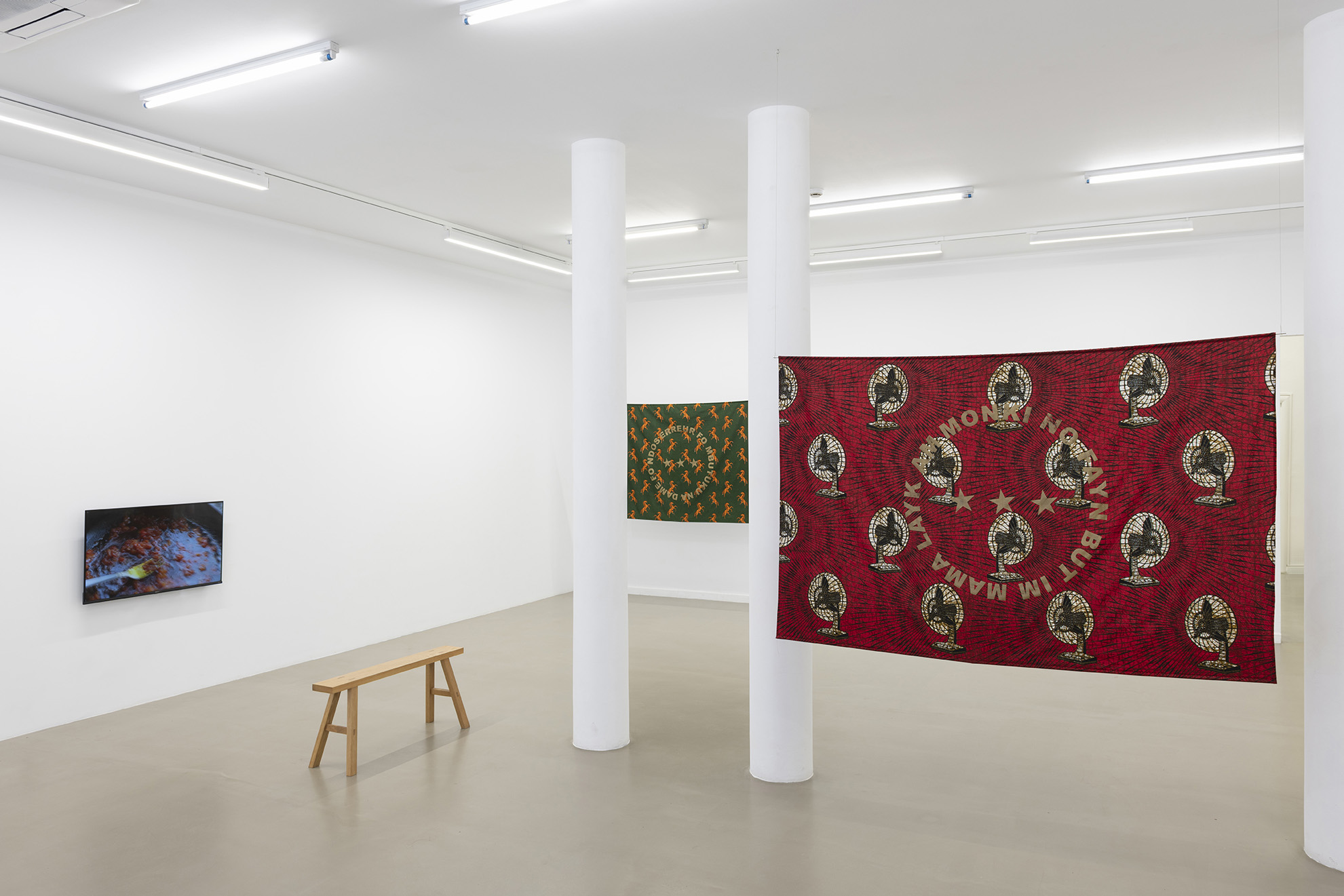
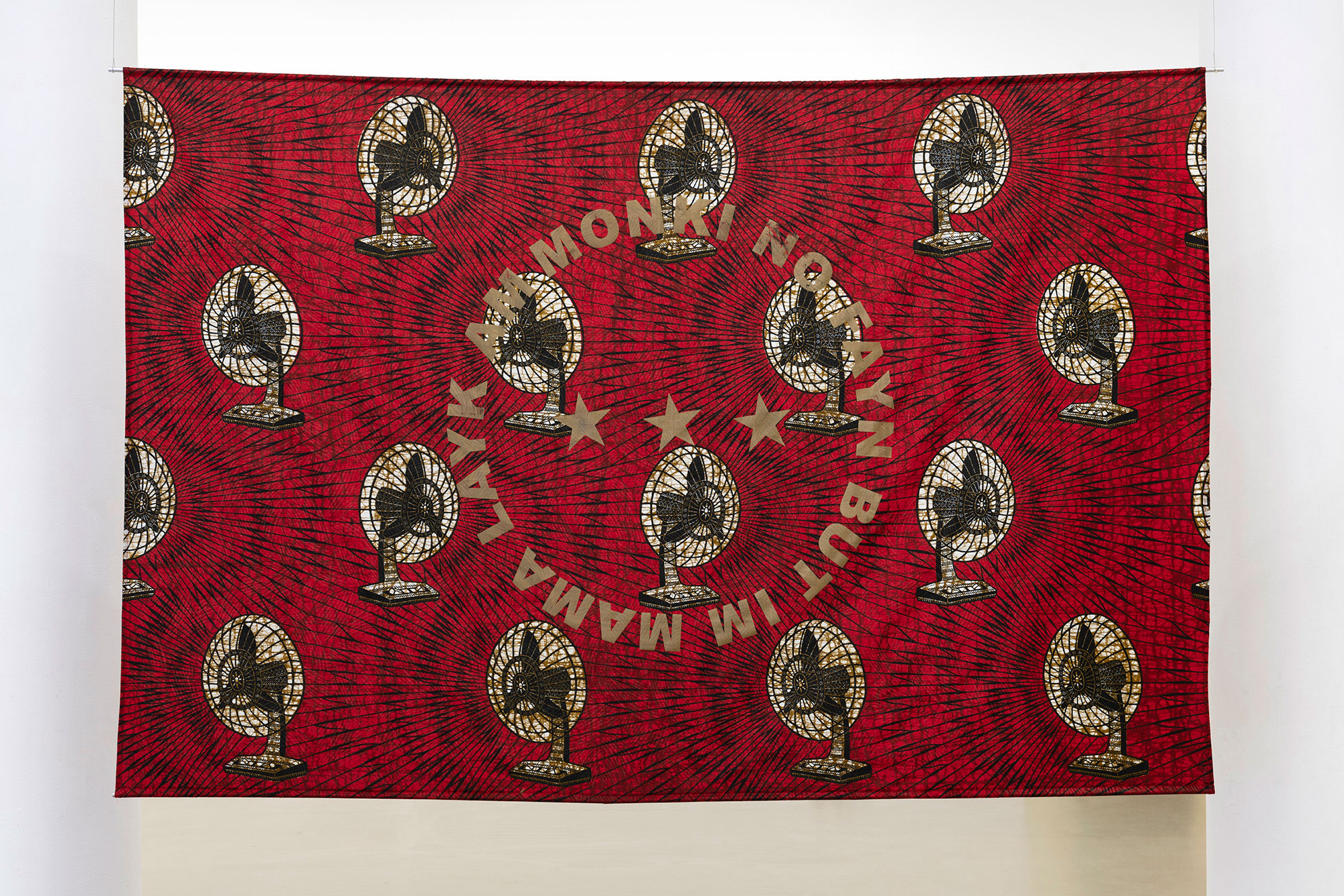
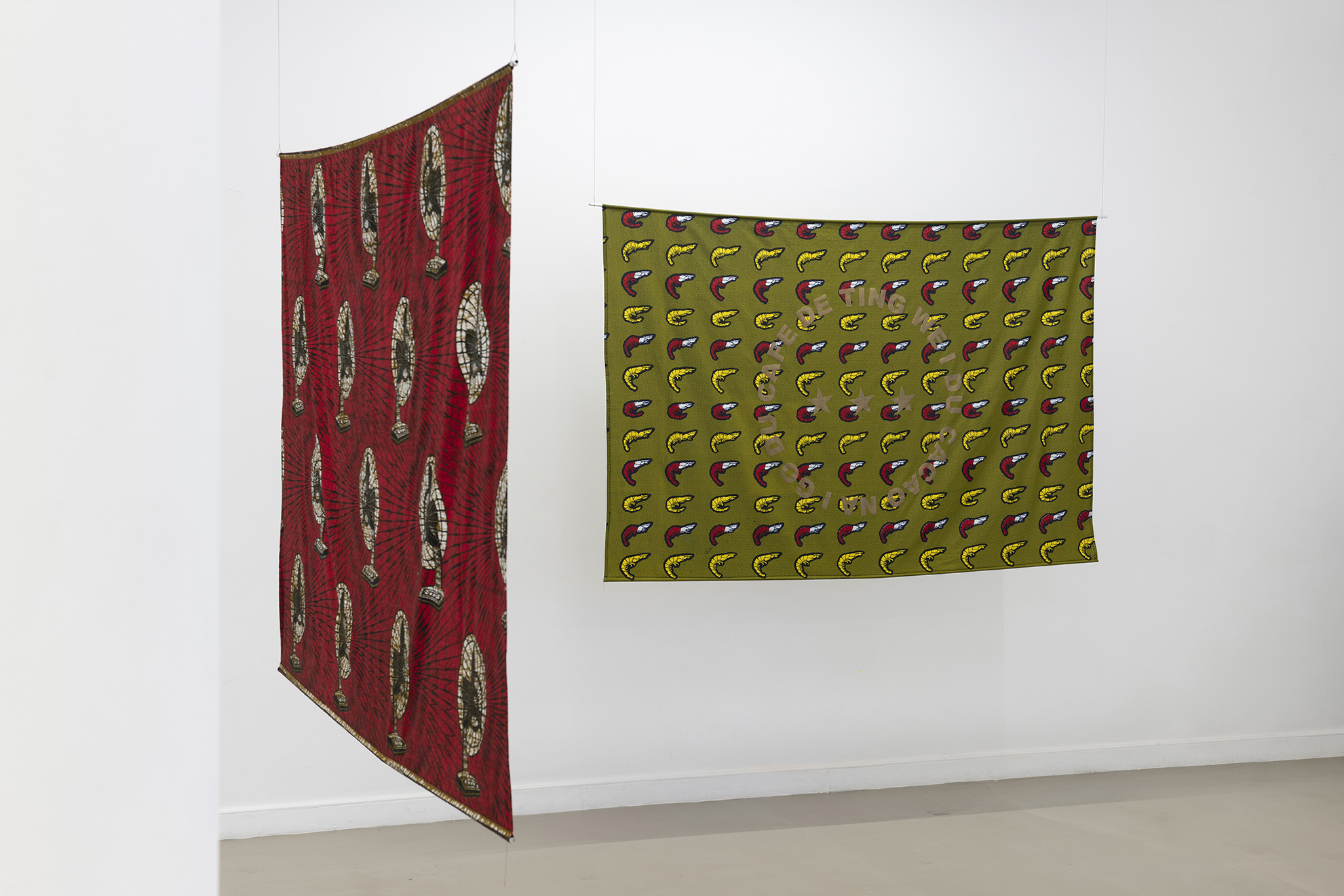
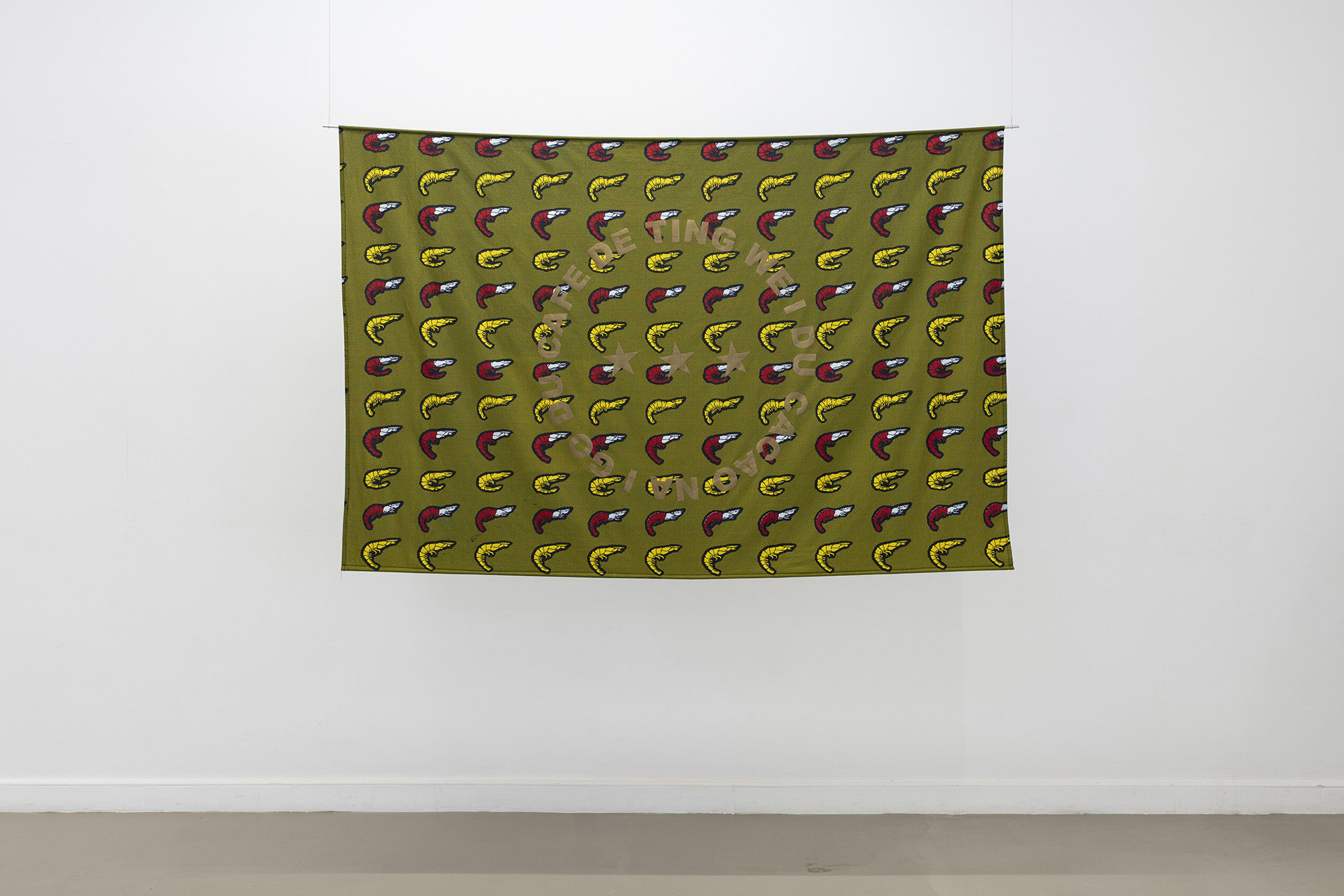

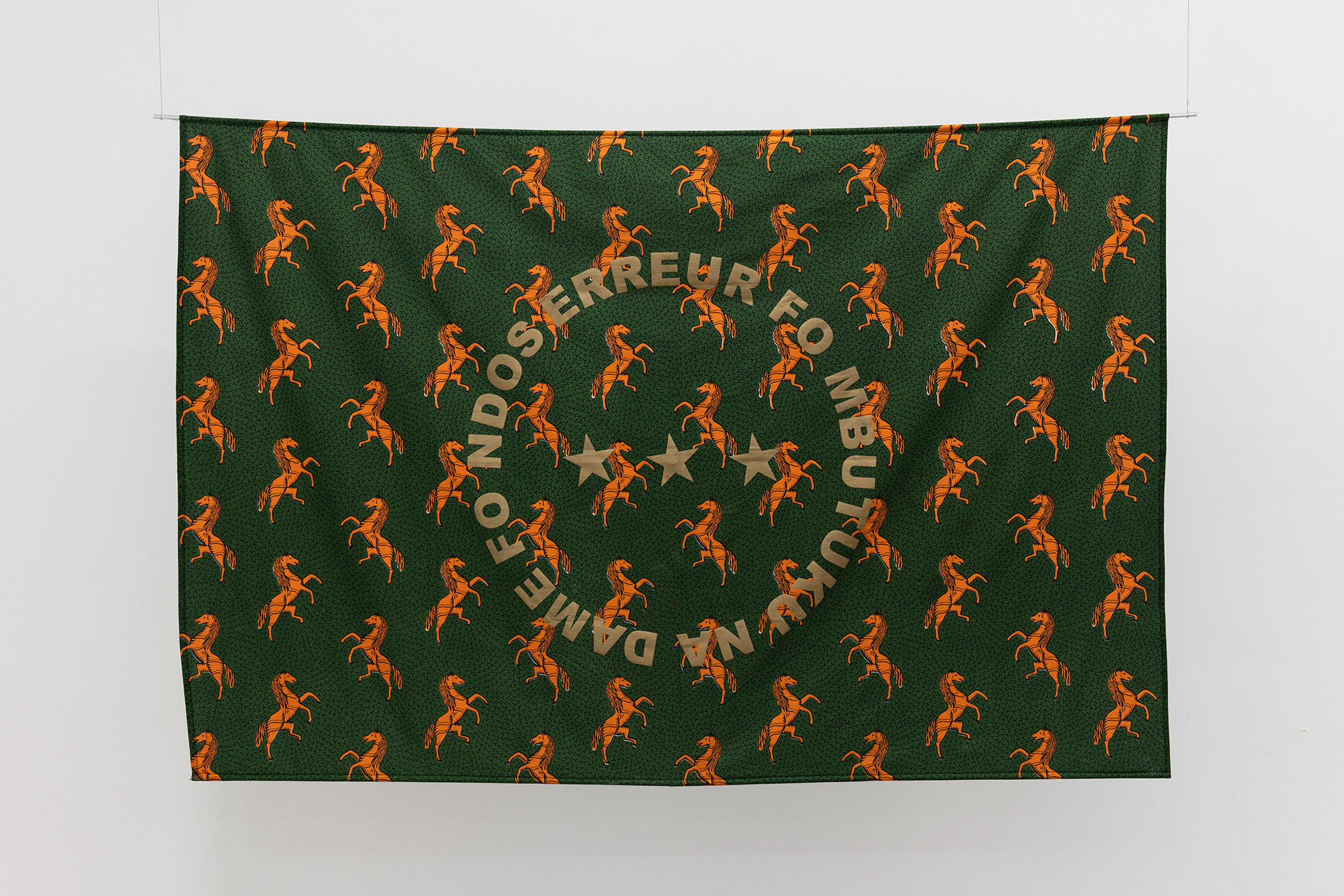
know more about
Text by Tsering Frykman-Glen
For her exhibition “Taym we taym bi bin taym” Agnes Essonti Luque has produced a new body of work that includes a range of mediums, including textiles, installation, photography, and video. Presented as an assemblage of objects, images, ideas, and emotions, Agnes reminds us that every thought, feeling, person and place is part of a larger whole.
Agnes’ use of Pidgin is, in part, a commentary on the violent oppression of languages, and therefore communication, by colonial forces (as Ngũgĩ wa Thiong’o wrote “The bullet was the means of the physical subjugation. Language was the means of the spiritual subjugation”*), but also as an acknowledgement of Pidgin’s adaptive and evolving nature. Contrary to the perception of Pidgin as a broken or bastard language, Agnes understands it is a living language that is continually shaped by the experiences and needs of its speakers, making it a unique form of assemblage in its own right.
Bonaventure Soh Bejeng Ndikung elaborates – “The argument is that instead of understanding Pidgin or pidginization as a broken version of any language or culture, they must be understood as a gathering of a plurality of languages, lifeways, cultures, philosophies, ways of existing in the world, whereby the gathering is always larger than the sum of its parts. Instead of understanding Pidgin or pidginization as a broken version of any language or culture, they must be understood within the realm of performativity, i.e., when these aforementioned gatherings become “happenings”, always in action, in transformation, in processuality – doing and undoing themselves. Instead of understanding Pidgin or pidginization as a broken version of any language, they must be understood from that vantage point of indeterminacy and multidirectionality wherein histories and geographies collide, whereby distances between cultures and social imaginations collapse. And ultimately, instead of understanding Pidgin and pidginization as a broken version of any language or culture, they must be understood as polyphony. The polyphony of the quotidian in the Pidgin spoken at home, in markets, in bars and restaurants, in the dormitories of schools that have prohibited the speaking thereof, but also the polyphony in the music made with and through Pidgin.” **
One particular, and integral aspect of Agnes’ work is her affinity for food. This connection is evident in many forms, from video and photographic works to the table laid ready and waiting for guests to share a meal. Whilst it is clear that Agnes’ practice is undeniably intertwined with the pleasures of food, these works reveal that her interest goes far beyond the essential needs for sustenance, or frivolously Instagrammable dinners. More than just visual depictions of food and implied eating, they highlight the importance of the shared experience while taking into consideration complex emotions and ideas related to culture, tradition, and identity. Collectively, the works transcend the sum of their parts in order to become something much more cogent and significant.
“Because when I buy snails and suya, that’s when I’m really me, when I greet Yaya in the morning, walk into the shop and look through the shelves: dried fish, ndjanga, ndjansang, tomato, palm oil and fufu, that’s when I’m living and enjoying it, when I mix ingredients in the mortar and pestle and pound them “tap, tap, tap”, in the pot adding thyme, salt and pepper, and when I sit down to eat, with my father and mother, with my son or my lover, we eat, drink and laugh, we are transported for a moment to Douala, Limbe or Eséka, to Lucena or Pointe-Noire.
Because talking about food I talk about life, about emotions and feelings, about connections between places, between people, about tradition, about customs and also about modernity. Because I have read many books and I hardly remember anything, but I never forget a meal”.***
*Decolonising the Mind: The Politics of Language in African Literature – Ngũgĩ wa Thiong’o.
** Pidginization as Curatorial Method: Messing with Languages and Praxes of Curating – Bonaventure Soh Bejeng Ndikung.
*** Agnes Essonti Luque.
Tsering Frykman-Glen is a curator and the founding director of Tangent Projects, where Agnes has her studio. They have worked together on several projects and the poem below is part of an ongoing collaboration that they believe has form but as of yet, no end in sight.
Agnes Essonti Luque(b. 1996) is a Cameroonian and Spanish artist from l’Hospitalet de Llobregat. With a strong connection to her African roots, she grew up in a multicultural environment that has greatly influenced her work. Essonti’s academic background reflects her passion for the arts and cultural perspectives. She has a Diploma in Photography from the KCC in London, a PgD in Culture and Thought of Black Peoples from the UCM in Madrid and a Master’s Degree in Photography from Blank Paper in Madrid. Her practice focuses on exploring crucial issues such as afro-diasporic identities and cultures. She uses a wide range of media, including performance, video, and photography, to create pieces that serve as a catalyst for her ongoing research on these topics. Through her work, Essonti seeks to piece together her own memories and offer new perspectives on these complex issues. Her artistic vision is heavily influenced by decolonial processes and activism, reflecting her deep commitment to these causes. Essonti’s work has been shown in international exhibitions, including 1384 Days Wide at Rencontres de Bamako 2015, 14th Dakar Biennale OFF and XI Lanzarote Art Biennial, in 2023 she has made the performance Bayam Sellam, La Bissaperie at the Museo Nacional Thyssen- Bornemisza and in the MNCARS.
Read More

